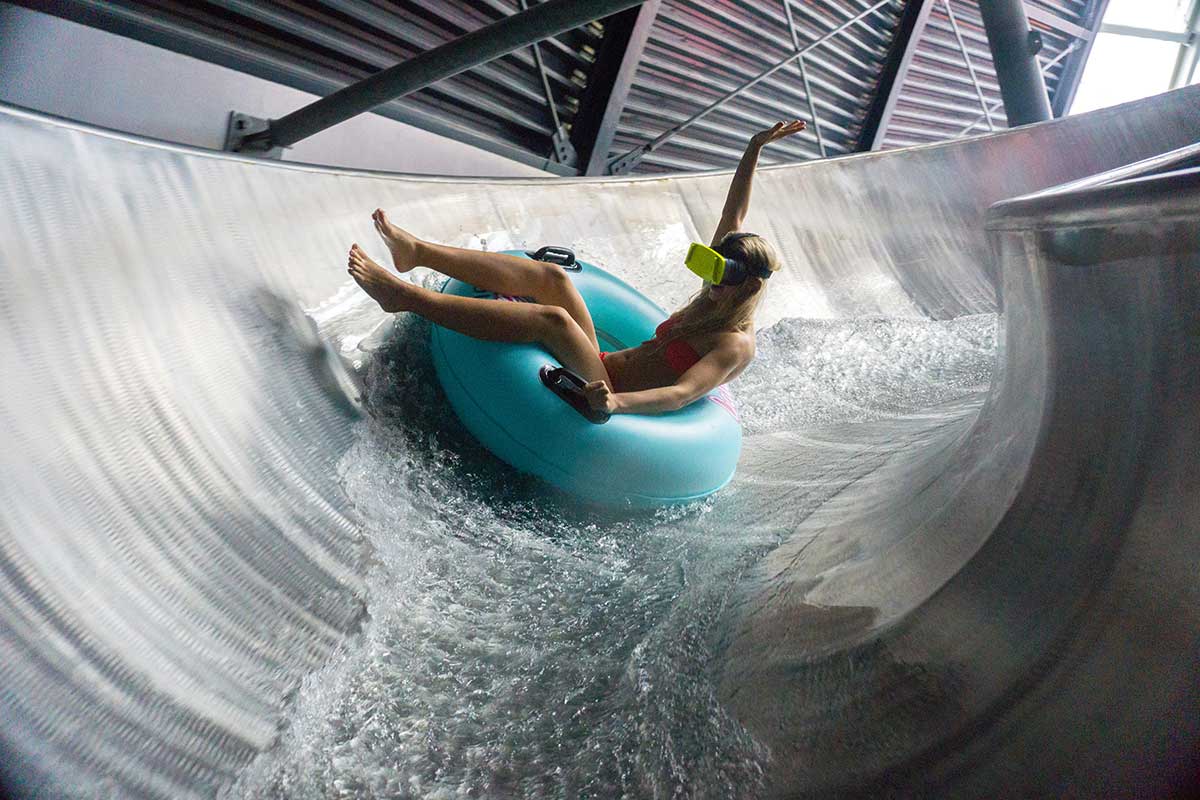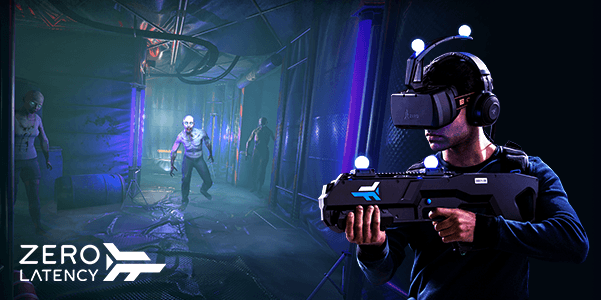Waterslides never fail to deliver wet and wild thrills and a game of laser tag can be a really fun way to find out how long your friends would surivive in a futuristic space battle. So how does one elevate these already popular activities? Virtual reality, of course. Duh.
Imagine being able to step into a world with your friends, and all of a sudden, you’re transported to the distant Star Wars planet of Tatooine. Virtual reality technology is being incorporated into arcades and even water parks, where the experience is so life-like, users swear that when they reach out to touch a droid, they can actually feel it.
Star Wars fan Joshua Fendley had to try the technology out for himself, and told Technology Review that his experience was mind-blowing. “I could have stayed in that little world forever,” he said. “It was really cool. It wasn’t just the incredible graphics of the VR technology, but additional special effects such as the sensation of wind blowing, heat, and burning smells that all added to the thrilling experience.”
A New Kind of Gaming Experience
If Star Wars isn’t your thing, how does a Ghostbuster’s experience where you and a partner in specter-fighting crime have to capture Slimer and all of his ghoulish buddies sound? Besides simply putting on a set of VR goggles, players wear mock proton packs as they make their way through a maze that has transformed into a haunted New York City.
The company behind the next-level arcade experience, The Void, promises users “a whole-body, fully immersive VR experience, full of surprises at every turn.” And they seem to be delivering on that promise.
“Ever since we first launched Ghostbusters, the natural reaction from our guests as they come out is ‘Wow, that was awesome. What else can I do?’” said Void’s CEO, Cliff Plumer.
The VR experience even got the thumbs up from Ghostbusters director Ivan Reitman, who called it “just as radical as I imagined.”
So far, the company has three VR experiences: Star Wars, Ghostbusters, and a supernatural game set at the 1893 Chicago World’s Fair called Nicodemus: Demon of Evanishment. Currently, the company has nine locations scattered across the globe in tourist hot spots, like New York City, Orlando, London, and Dubai with more planned for the future.
Zero Latency is another company bringing free-roam multiplayer VR to the masses. The company has “warehouses scale” gaming spaces on four different continents, in 10 countries. It shouldn’t come as a surprise, but games centered around scenarios such as zombie outbreaks and galactic space battles are incredibly popular with teens and young adults. As far as prices are concerned, up to eight people can play in a single game for around $50 per 20-minute session.
On the other side of the VR spectrum is the new trend of bringing the technology to traditionally technology-free leisure activities. At Germany’s Galaxy Erding water park, guests can wear a headset while zipping down a slide and be immersed in a river of butterflies. Sensors built into the slide sync up with the headset, allowing for a truly one-of-a-kind VR experience as guests jet down the slide chute.
Stephen Greenwood, CEO of Ballast VR who built the slide VR headset, admits that it has a novelty factor, but is incredibly entertaining. “It’s just a really bizarre combo that ends up being really thrilling and fun.”
Water slide enthusiasts seem to agree too. In just three and a half months, 36,000 people have paid two euros a piece ($2.33) to try the VR waterslide.

The Skeptical Consumer
Virtual Reality technology can also use all the extra help it can get. VR headsets like Oculus Go have been around for a few years now, but they have yet to catch on with the mainstream. In fact, sales of VR headsets are so dismal that they fell 31 percent in the first three months of 2018. The lack of people with a VR headset sitting on their living room coffee table could largely be due to people being apprehensive about buying something that is still very much a novelty experience.
“Just like arcades in the ’70s and ’80s, it’s much more worthwhile to do [VR] out of the home,” said Philip Lelyveld, head of Immersive Media Initiative at the University of Southern California’s Entertainment Technology Center.
While the Oculus Go headset might be available for under $260, there’s still the issue of buying a tethered, high-end consumer VR system such as Oculus Rift and a PC capable of running it. That can easily be over a $1,000 – games not included. Most people simply don’t want to shell out that kind of dough just yet.

For companies like The Void and Zero Latency, bringing a social aspect to virtual reality offers a broader scope for introducing people to the technology. People are able to try out the technology with their friends and really use it at the highest level. This method of bringing VR to the masses seems to be hitting big too, popping up everywhere from arcade eateries like Dave & Busters to JFK airport. It’s estimated that around 6,000 location-based VR entertainment centers will rake in around $1.2 billion this year. It’s worth noting that the majority of these aren’t tricked out warehouses and interactive water slides, but temporary pop-up VR centers.
A world where VR headsets are as common in the home as the television was by the 1960s might still be a few years off, hower, maybe a few more VR trips down the waterslide chute is all that’s needed to get us there.
Images via Ballast VR and Zero Latency.

